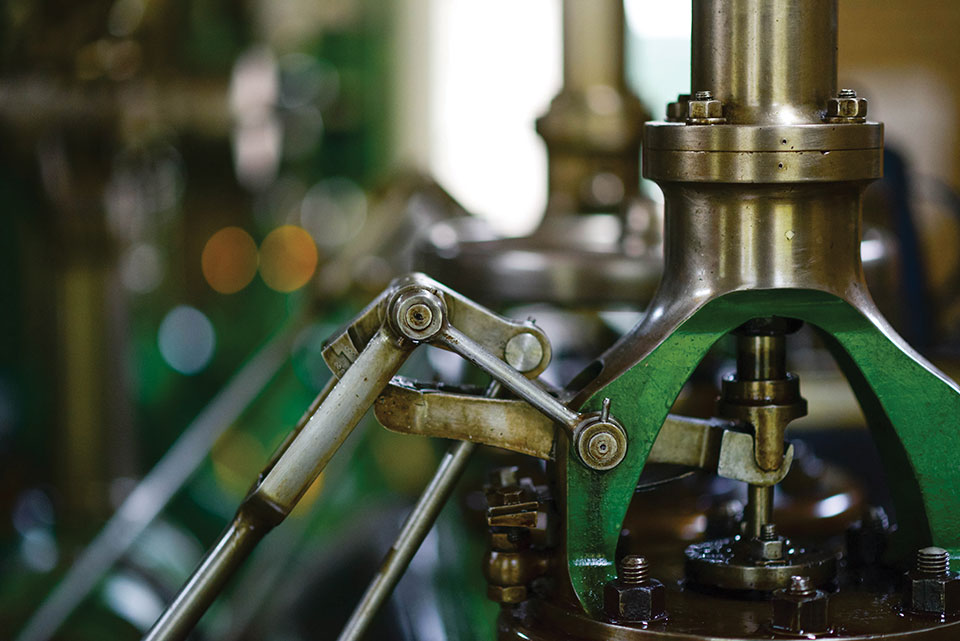Annus Mirabilis (Anus Horribilis)

Outside the Special Instrument Factory, protesters rally against war, corruption, and the latest in protective head gear: the Ex-Box.
Procrustes-1 was the model name. The design was child’s play: screw four pulleys into a camp cot and link them up with each other, then stick a winch on the middle leg and run it through a reduction gear to wind the cable through the pulleys, and you got yourself a rack.
The only bummer about the product was its bulk. The way it was constructed, the pulleys kept it from folding in half. But the clients didn’t need the rack to be collapsible, they needed it to be compact. This isn’t one of your Ikea bookshelves that you have to assemble yourself, checking the instructions every two seconds to see where to screw this or nail that. The Special Instrument Factory’s products are delivered ready-to-use.
Special Instrument made a lot of different things: garrotes, Spanish boots, iron maidens, the Speak the Truth basic torture set and the Speak the Truth II deluxe torture set; collapsible gallows for one, three, or five persons; a portable guillotine; and all kinds of pokers, brands, hooks, and pliers. The Procrustes-1 was supposed to introduce a new product line. The factory had no competition, unless you count a similar manufacturing plant in China, but because that one was so far away, its products cost half again as much with no difference in quality.
Semyonov was applying for the position of assembly fitter. The assessment task they gave him was to make the Procrustes-1 more compact. He did it by slightly adjusting the angle at which the pulleys were attached. His operations director grunted, signed the official work order, and sent Semyonov to get the medical exam. After the exam, he got his work uniform, did his training, and went to his work station.
“If you fine-tune a model’s design, you get a monthly bonus on top of your salary,” the director explained to Semyonov. “If you invent a unit that goes into production, then you get a cut of the sales. Before you we had this guy, when he was here we were releasing up to seven new products a month.”
“So where is he now?”
“Fired for sabotage.”
“Come again?”
“You saw the security camera installed in your workroom? Well, he didn’t. He deliberately ruined equipment and test models.”
“What for?”
“’Cause he’s an idiot. And he stopped getting his cut, after he was fired. Although he’d already managed to build himself a house and buy a car.”
This explanation made total sense to Semyonov. Only an idiot would be so moronic as to lose a job at a dynamic, flourishing production facility. The salary wasn’t exactly the highest he’d ever seen, but it let him keep his head above water and pay down his credit cards. The first thing he had to do was learn all the technological stages of the production process, from cutting out blanks to packaging the finished product. As the operations director explained, Semyonov had to do this so that when he was developing a prototype, he’d know whether the factory had the necessary manufacturing capacity to put it into production.
Drill presses, trimming machines, press brakes; the different rolling mills; model and series names, their specs, mass and size, and required accessories, and even the color range: Semyonov had to know all of it by the end of his month-long probation. He studied all of it, intently, although almost every workspace had a copy of the “wraps”—printouts of the specifications—hanging around, and he didn’t even need to memorize everything.
It wasn’t too pleasant knowing you were making stocks for prison camp inmates or testing the Kutuzov or Homer eye-punches (on mannequins, of course). Next thing you know, they’d be inventing a portable wall for executions.
He worked a while at each machine, got to know all the workers, and considered himself lucky to have landed a good job. As long as he didn’t pay too much attention to what Special Instrument made. Most of the people there managed that. When you’re bending a thousand hooks on a bending machine, you don’t really get to thinking about how they’ll be batched out later for cats o’ nine tails, and at the drill press you don’t have time to wonder what the holes in the blanks of the Phalanges unit are for (it’s a finger-breaking device). Every so often Semyonov had to sub a shift with the welders, or the bending machine operators, or even with the packagers, and, to tell the truth, he liked that a lot more. It wasn’t too pleasant knowing you were making stocks for prison camp inmates or testing the Kutuzov or Homer eye-punches (on mannequins, of course). Next thing you know, they’d be inventing a portable wall for executions.
So that’s why, anytime his friends asked what he did at work, Semyonov would reply: “I make folding beds, hangers . . . mass-market stuff, basically.” As a rule, everyone lost interest quickly. But Semyonov suffered from the knowledge that his work was so . . . hmm . . .
base? He even tried to talk about his anxiety with his wife, but she didn’t really know what kind of factory her husband worked at, either, so she’d say, “There’s no such thing as shameful work. What’s shameful is not working and living off your wife.” She was right, of course. For some time he was able to renounce these fastidious views and continue assembling test models. But eventually he started feeling low again. He tossed and turned all night and barely lifted a finger at work.
His sense of guilt left him so worn out that he was about ready to duplicate his predecessor’s mistake. Semyonov’s knowledge of the factory was such that he could’ve caused severe damage to the production process without it ever being pinned on him. But sabotage went against his nature. He thought of himself as a creator, not a destroyer. Any fool can break something, but just you try and make something.
Then, all of a sudden, he understood what was really bothering him.
Up until this point Semyonov’s main task had been simplification and the ensuing reduction in production cost. He accomplished this with enviable regularity. He introduced dozens of process optimizations, enabling the factory to significantly increase production volume while conserving both materials and time. The only thing Semyonov couldn’t do was innovate. Of the dozens of blueprints that passed through his hands, some were actually pretty clever from an engineering standpoint, and he was able to find something to improve in almost all of them. But he couldn’t invent anything new himself.
He gradually grew more and more agitated, but not at the people who invented instruments for executioners: at his own idea.
Semyonov sketched it out on a scrap of paper and showed it to the operations director, who scratched his chin and said, “Might could work. Can you have the prototype in a week?”
Semyonov knocked it together in half a shift. They sent a test batch to Moscow, and a week later they’d already gotten not only extremely positive reviews but, even better, an order for another lot, twice as big as the first.
It was a very strange item for the factory, not least because it wasn’t meant for any kind of harmful application. It was just a box, with fasteners to keep it on your head. The front wall was see-through, the others weren’t. The only other thing was an opening in the rear wall with an M12 metric thread, literally just a couple of threads deep. The specifications read: “Ex-Box Helmet/Headgear/Cubical.” The opening in the rear wall was plugged by a plastic cap, so people could screw anything they wanted into it, from a video camera to a souvenir plaque with a registration number.
As he worked to perfect his design, Semyonov was so inspired that his wife fell in love with him a second time. His life acquired meaning; his days became rich and full. Special Instrument’s next lot of 500,000 Ex-Boxes sold like hotcakes. After that came an order for 1.5 million units, and the factory had to increase its production capacity. Even then they might not have completed the order on schedule if Semyonov hadn’t developed a technological process that brought the time spent on helmet assembly down to under a minute.
There was nothing bad about these Ex-Box things, and they really did protect you from rain, cold, noise, and dust.
The biggest client was the MIA, the Ministry of Internal Affairs. And at first it really was just the police going around in them. It looked funny, but evidently the constructs protected the head perfectly well, so ads for Ex-Boxes started showing up everywhere. Bikers, cyclists, skaters, and in-line skaters all cruised around in their flashy Ex-Boxes.
Soon Ex-Boxes were made mandatory for schools and universities, and then for everyone, period. Clinical trials proved that the boxes did shield the brain from the harmful radiation of cell phone towers, microwaves, solar radiation, and wireless Internet. So people wore them. All the more reason to, since there was nothing bad about these Ex-Box things, and they really did protect you from rain, cold, noise, and dust. Orders for Ex-Boxes started coming in from abroad. Semyonov’s wife and boss wore Ex-Boxes, as did he (his Ex-Box was covered in gold leaf). The entire factory pretty much doted on him.
All the same, Semyonov didn’t achieve true victory until the day the Ex-Box was used for its intended purpose.
This occurred right in front of Special Instrument’s main entrance.
Ever since anybody could remember, random weirdos with signs had been promenading back and forth by the factory gates, in protest. They used to be bare-headed, but now they also had boxes over their heads. Wearing an Ex-Box was mandatory for participation in all public gatherings, whether they were rock concerts or meet-and-greets for singles over thirty. The protesters rallied against Ex-Boxes, war, and corruption. Everyone at Special Instrument had already gotten used to these demonstrations and could tell all the protesters apart by the graffiti on the walls of their helmets. Nobody was the least bit put out by them. Why get mad at an idiot? And anyway, there was always a police patrol stationed nearby.
This time, though, the police didn’t stand around and watch. Right in front of the workers (it’d been half an hour since the shift ended, and many workers had already made it out the front entrance), some beefy guys in gray uniforms and square helmets (special order for the MIA) wrenched the protesters’ hands behind their backs and slammed them on their knees in a row along the edge of the factory parking lot. A man in sergeant’s stripes spent a few minutes going down the row screwing something into the back wall of each detainee’s Ex-Box; it was some kind of little cartridge that looked like a single-shot powder load for a stud driver, the kind you’d see at any construction site. Several muted pops went off, one after the other, and the detainees sprawled face-first onto the ground. Their bodies, along with the protest signs, were briskly piled onto a flatbed truck and carted off somewhere.
Now that was real sabotage for you: not preventing people from doing things but forcing them to dig their own pits and pitch into them face-first.
The workers were shocked by what they saw. In a frenzy, one of them even started trying to rip his Ex-Box off. But come on: where do you think you’re going to go outside the factory grounds with an uncovered head? Especially now that you know that the helmet’s purpose is not to protect the head, but to contain the splattering of the head’s contents?
Semyonov had observed these events from a distance and grunted, gratified. Inventing a way for everyone to carry around their own personal execution walls had been a flash of true genius. Now that was real sabotage for you: not preventing people from doing things but forcing them to dig their own pits and pitch into them face-first.
He paused for a good minute at the gatehouse, then walked slowly to the nearest home improvement retailer. He checked and rechecked before he was satisfied that he could easily screw the load in himself, and that there would be no misfire.
Translation from the Russian by Anne O. Fisher
Translator’s note: Anus horribilis is not a scatological play on the phrase annus horribilis; it is a gesture toward the Russian phrase polnaya zhopa (“total ass”), a colloquial phrase indicating any very bad situation. By way of metonymy, anus horribilis has been appropriated by the common parlance to mean the same as polnaya zhopa.












